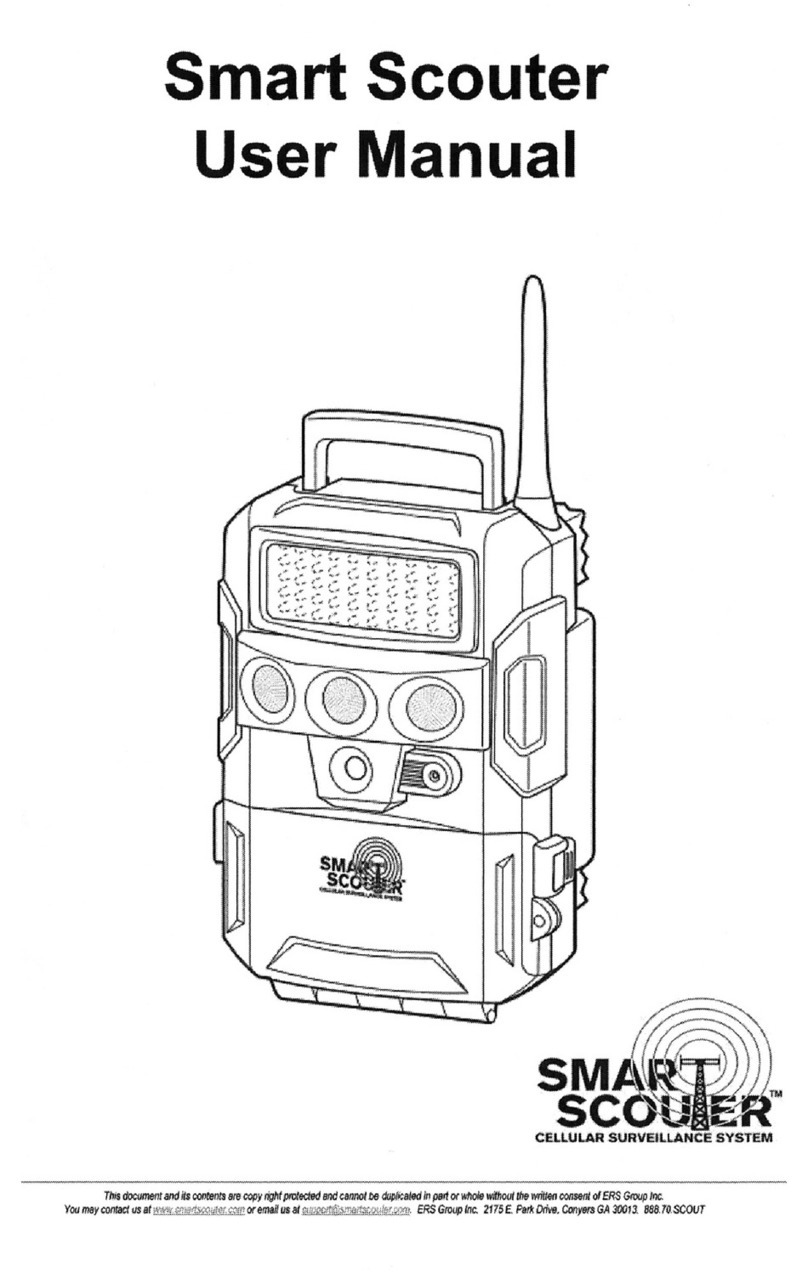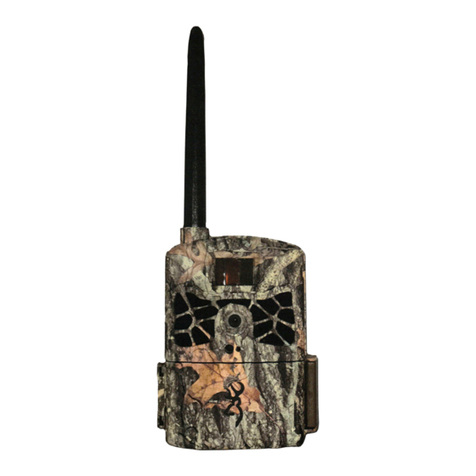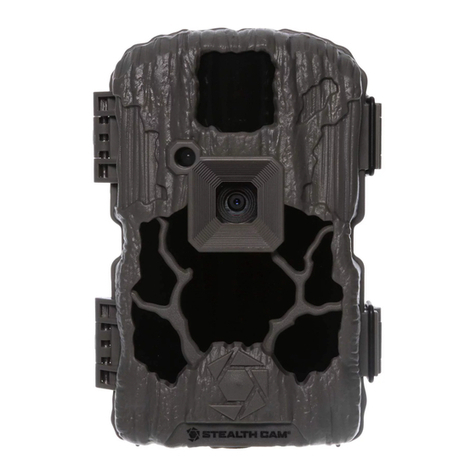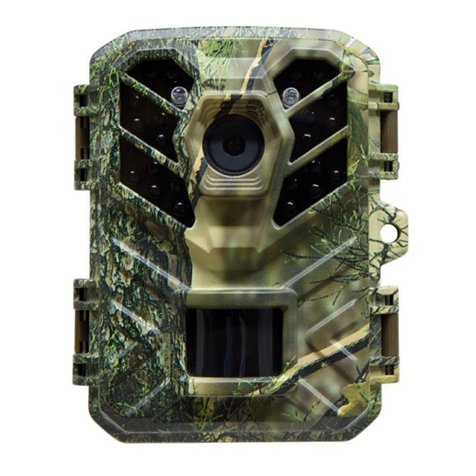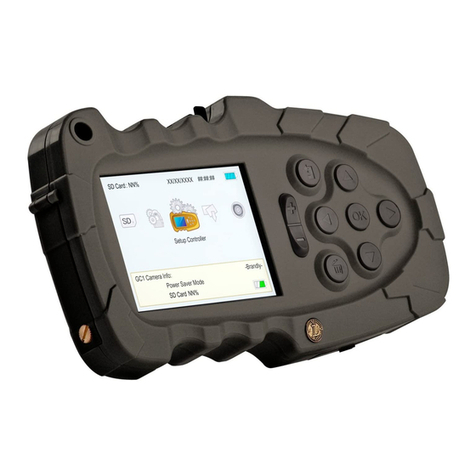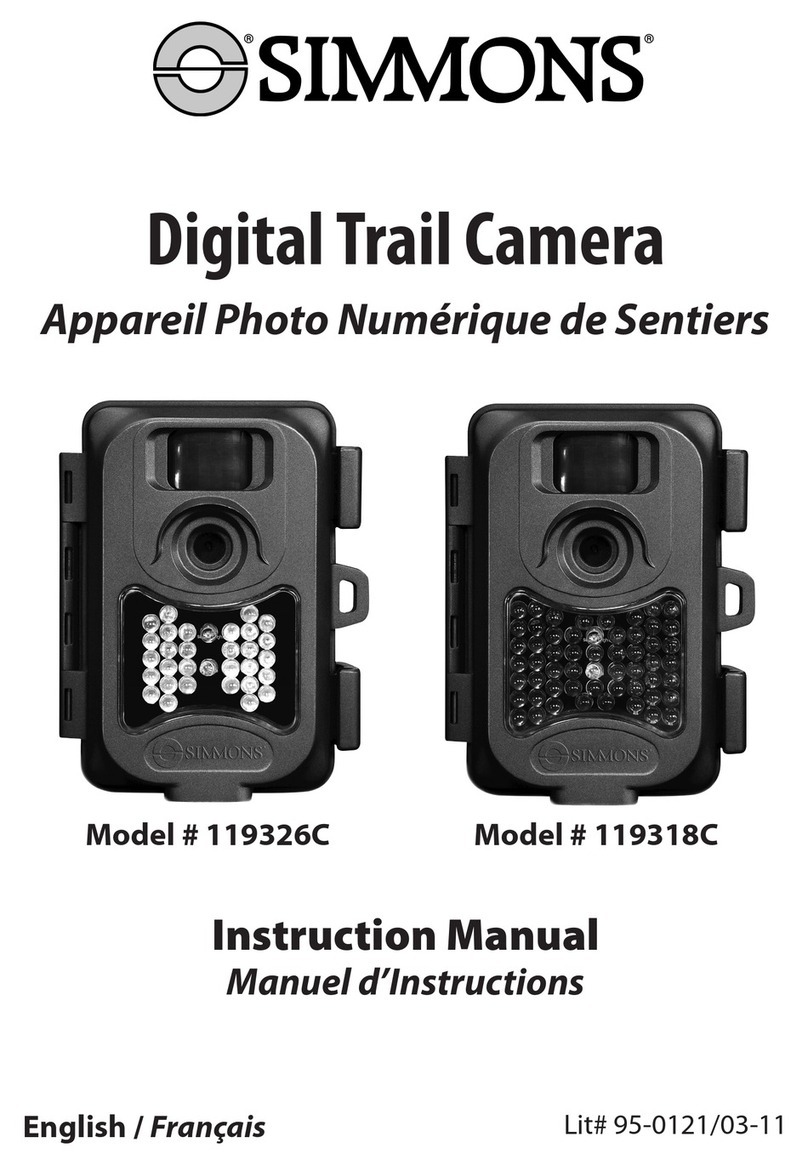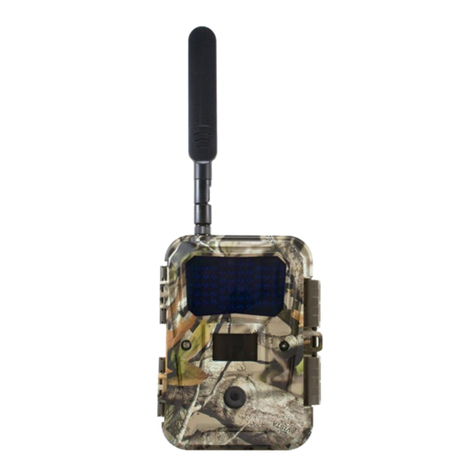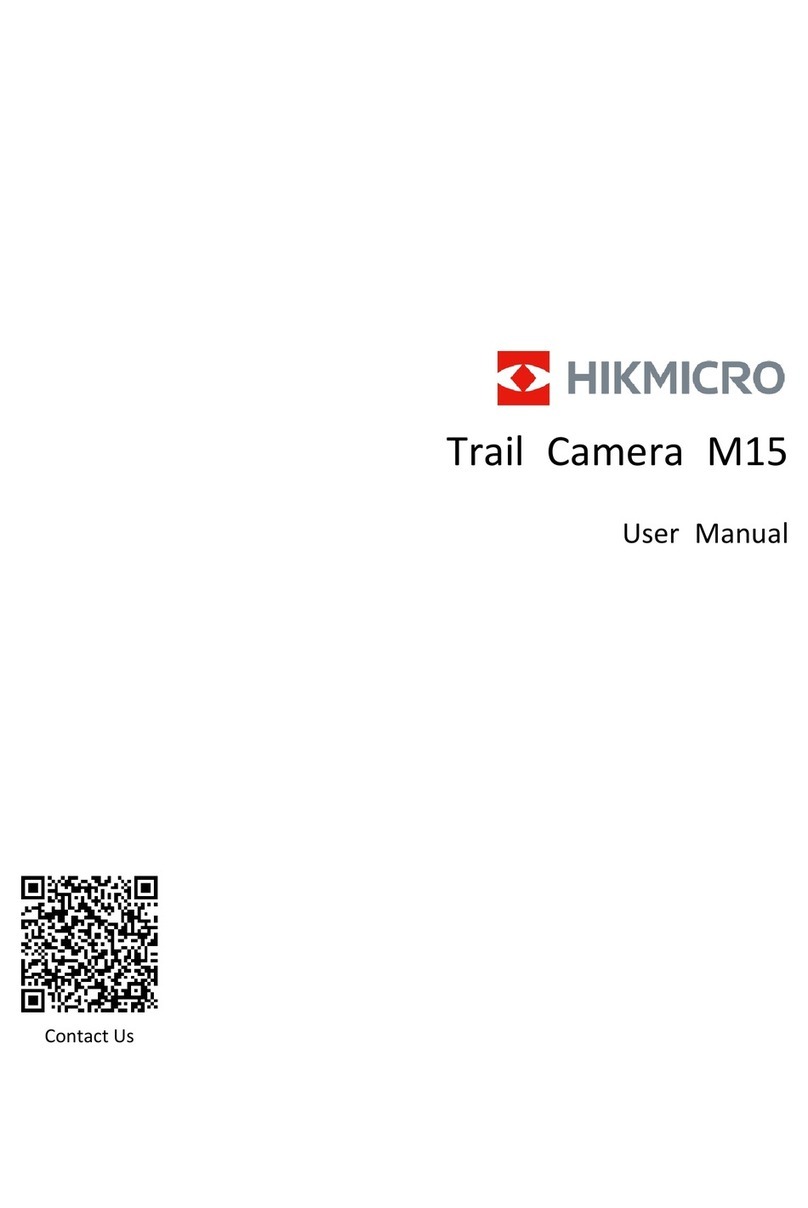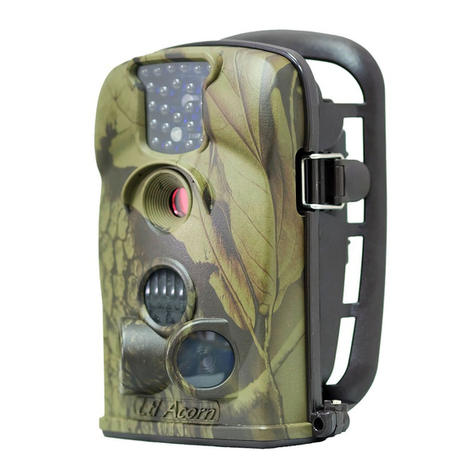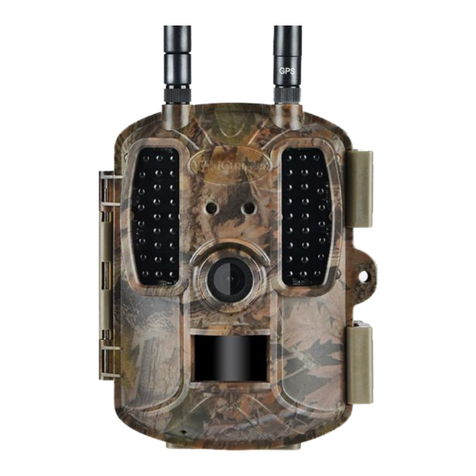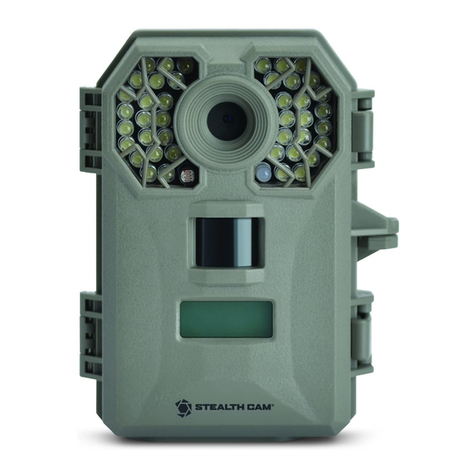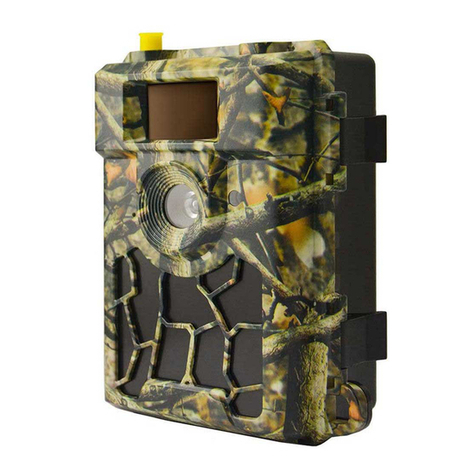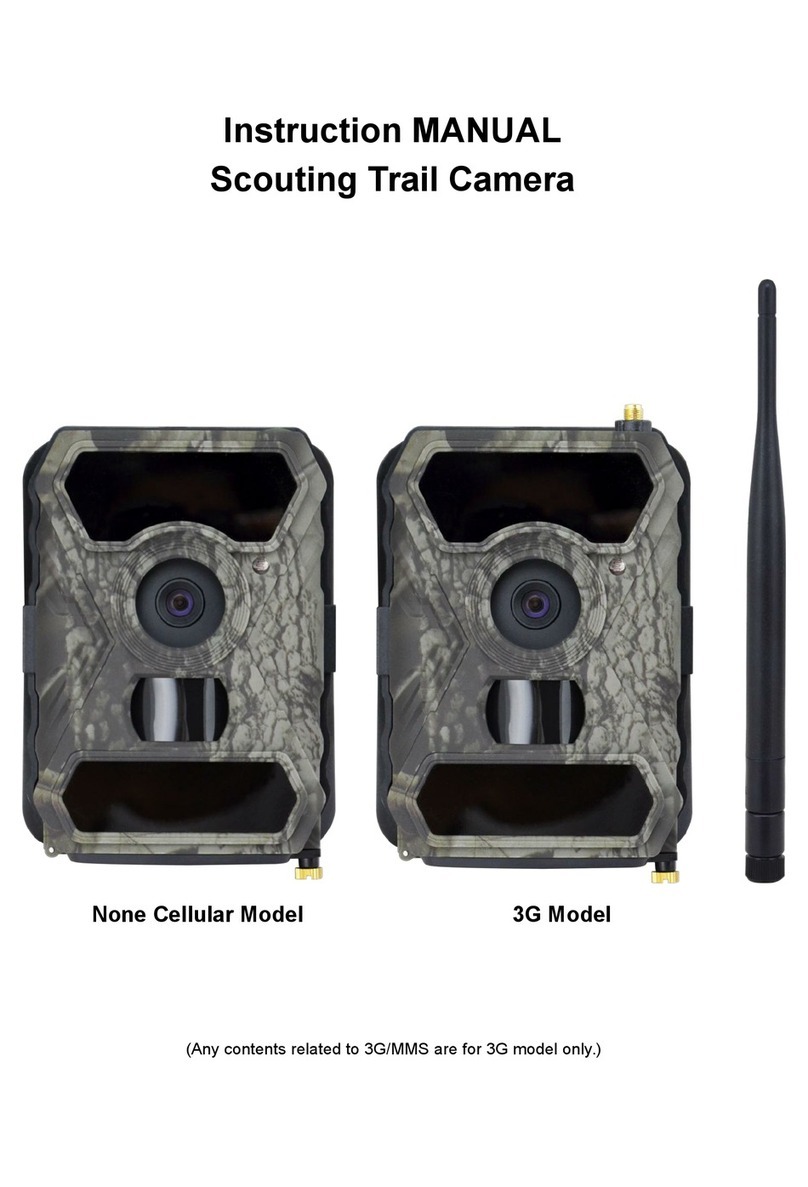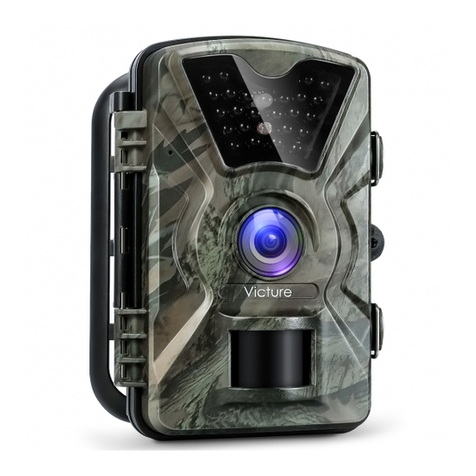greenfeathers NC701G User manual

Wireless Bird Box Camera Kit
Quick Start Guide
Please read me before you start!

2

3
Congratulations! You are now the proud
owner of a Green Feathers Bird Box Camera.
For years we have been a leading provider
of wildlife cameras and our bird box
cameras are a number one choice for those
wanting to watch wildlife in their very own
garden from the comfort of the sofa.
Please take a couple of minutes to have a
read through this booklet before you get
started. Not only are there some helpful
hints and tips, but we also have some
guidelines to help you plan the installation
of your camera.
With just a bit of time, a cup of tea and a
friend you’ll be up-and-running in no time.
We hope you enjoy your camera!
Contents
1. Camera setup
2. Connect to your TV
3. Physical installation
4. Accessories
5. Troubleshooting
Watch our setup videos
Don't know where to start?
Watch our setup videos online.
green-feathers.co.uk/help

4
1. Camera Setup
Before installing the camera in your nest
box, wire it up inside the house rst to
make sure everything is working as it
should.
The rst thing to do is to remove the lens
cap and power up the camera using the
mains power supply.
Note that the camera does not emit a
visible glow, even when the night vision is
active.
Power up the receiver and check the
channel number indicated by the red
light matches the number on the Wireless
Channel Stick on the rear of the camera.
Antenna
Lens
Power in
IR LEDs
Bracket
Insert the yellow AV cable plug into
VIDEO1 and the white one into AUDIO1.
This will take the output of the camera feed
to your TV, monitor or recorder.

5
1
Wireless Channel Sticker
1 2 3 4
Television/Recor
der
1 2 3 4 Channel Selector Switch
To TV/Recorder

6
2. Connect to your TV
Make sure you can get an image on your TV before mounting the camera outside.
Direct connection to TV (RCA/AV)
RCA to HDMI Converter
(Sold Separately)
From Receiver
From Receiver
HDMI Cable to TV
(Sold Separately)
USB Power In
A. Direct Connection
If your TV has RCA (phono) connections, you
can connect the AV cable directly to your TV.
Simply plug in the yellow and white plug
into corresponding ports on your TV.
Select the correct source on your TV. This is
often called ‘AV1’or similar. Consult your TV
user manual.

7
B. Connection via HDMI
Most modern TVs do not have RCA inputs
and instead have HDMI as an industry
standard.
Use one of our converters to upscale the
video output from the receiver to your
HDTV. Plug in the AV cable plugs into the
input side of the converter, power it up via
the USB socket and use an HDMI cable to
connect to your TV/monitor.
Select the correct source on your TV that
corresponds to the HDMI input.
Direct connection to TV (RCA/AV)
RCA to HDMI Converter
(Sold Separately)
From Receiver
From Receiver
HDMI Cable to TV
(Sold Separately)
USB Power In
Need a converter?
Search on our website for RCATOHDMI

8
What you will need
MCamera with bracket (included)
M5M screw (included)
MNest box (optional)
MScrewdriver
MMains power outlet
You may also need
MDrill
MPencil
MElectrical tape
MCable fasteners
MPower extension cable
3. Physical Installation
Now you are ready to mount the camera into your nest box.
Check Wireless Distances
Check the distance between the camera
and receiver before you install the camera
into the bird box.
Take the camera to the location where you
want to place it and power it up. Make sure
that you are receiving a good signal to the
receiver by monitoring the image on your
TV. See page 14 for troubleshooting.
Focussing your camera lens
Place a small bird-sized object in your bird
box. You can gently twist the camera’s lens
to adjust the focal distance of the camera:
clockwise to focus on objects that are
further away or anti-clockwise to focus on
closer objects. Monitor the results on your
TV/monitor until you are satised.

Rear of
Box
Inside Box
Anti-slip
pins
Mount the Camera in Nest Box
A. Installing in one of our bird boxes:
Pass the 5M screw provided through the pre-
drilled hole in the back of the box, screwing
into the nut on the easy mount bracket.
Our innovative anti-slip bracket design will
hold the camera in place against the wood.
There is a gap in the eaves of the box through
which to pass your cables.
B. If you do not have one of our bird boxes:
Following the diagram (right), drill a 6mm hole
at or above 210mm from the base of your box.
Then follow the Ainstructions above.
M Check the angle of the camera by looking
at the image on the TV and make any
adjustments if need be.
210mm min.
Larger boxes
Smaller boxes

10
Where to place your bird box
Dierent birds have dierent needs when it
comes to choosing where to place your bird
box. Generally you should look to place your
box in a quiet spot in the garden amongst
other plants or trees, making sure to leave
a clear path in for your birds to make their
landing.
Unless there is a tree or building providing
shade, it is generally a good idea to face the
box between north and east to avoid direct
sunlight and strong winds. Tilting the box
slightly forward will also help to prevent rain
from coming straight into the nesting area.
For blackbirds, robins and wrens you should
place your bird box 1.5 to 2 metres high,
well surrounded by planting.
For sparrows, starlings, tits and spotted
ycatchers you should place your bird box 2
to 4 metres high and slightly covered with a
clear entrance.
For woodpeckers, owls and kestrels you
should place your bird box between 3 to 5
metres high in a nice open space.
If there are cats and other bird predators in
the area then you should look to place
your bird box a minimum of 2 metres above
ground level.

11
WHERETO PLACEYOUR BIRDBOX
Dierent birds have dierent needs when it comes to choosing where to place your
birdbox. Generally you should look to place your box in a quiet spot in the garden
amongst other plants or trees, making sure to leave a clear path in for your birds to
make their landing.
Unless there is a tree or building providing shade, it is generally a good idea to face
the box between north and east to avoid direct sunlight and strong winds. Tilting
the box slightly forward will also help to prevent rain from coming straight into the
nesting area.
For bluebirds, robins and wrens you should place your birdbox 1.5 to 2 metres high,
well surrounded by planting.
For sparrows, starlings, tits and spotted ycatchers you should place your birdbox
2m - 4m high and slightly covered with a clear entrance.
For woodpeckers, owls and kestrels you should place your birdbox between 3m -
5m high, in a nice open space.
If there are cats and other bird predators in the area then you should look to place
your bird box a minimum of 2m above ground level.
11
2 metres
Robins, Wrens
3 metres
Sparrows, Tits, Starlings
5 metres
Woodpeckers, Owls

12
To learn more about using your USB Capture
Device, please visit our Help website.
Need a USB Capture Device?
Search on our website for USBCAP.
Connect to your PC or Mac
If you’re using one of our USB Capture
Devices to view and record your camera on
your computer, you can connect the RCA
plugs into the yellow and white connectors
on the device itself.
Then you need to install the Driver and
Software on your computer. The
installation will prompt you to connect your
USB device when it is ready.
4. Accessories
Now it’s time to install your accessories (sold separately).

13
Boost the Light in your Nest Box
Your camera’s night vision helps to improve
the picture at night but you can also
benet from adding an extra light source
to improve daytime images. Use one of our
energy-ecient LED lamps to help with this.
Our daylight lamps automatically switch
o at night to ensure the birds are not
disturbed and get a good night’s sleep. They
provide extra light during the day to boost
your camera image’s vibrancy and exposure.
When using this camera kit you need to
run a separate power supply for the lamp.
Need a Daylight LED Lamp?
Search on our website for BBLED3GB.
Lamp
Light sensor
(outside box)
Not used

5. Troubleshooting
Having trouble? Here are some answers.
Wireless Troubleshooting
Try to keep your wireless receiver away
from other wireless devices such as WiFi
routers, baby monitors, cordless telephone
or electrical multi-sockets. This will help to
minimise interference.
Improving Wireless Range
To reduce the amount of obstacles your
wireless signal needs to navigate, imagine
looking ‘straight through’to your camera
from your receiver. How many windows,
walls, oors and/or large objects is your
signal going through? Please be mindful
that thick materials and windows can
signifcantly reduce signal strength. Can this
be improved by moving your receiver or
camera’s location?
Are you receiving interference on your
picture, such as black horizontal lines or a
herringbone pattern?
This is typical of Wi-Fi interference – you can
change the wireless channel of the camera
to help improve the signal.
Need more help?
Find more help online.
Go to green-feathers.co.uk/help
and search NC701G.

15
Changing the wireless channel of your
camera is useful when adding additional
cameras or troubleshooting wireless
interference.
Locate and remove the black rubber bung
on the back of your camera as shown to the
right.
Inside are two white switches which change
the camera’s channel. Flick the switches to
the arrangements on the right to set the
camera to use channel 1, 2, 3 or 4.
Remember to switch the receiver to the
corresponding channel. You should see the
change immediately on your TV.
1
2
3
4
2
3
3
Changing the Wireless Channel of your Camera

16
Need more help?
If you require more assistance setting up
your bird box camera or you need further
support then please head to our Help
website where you’ll be able to nd all our
support guides and videos.
Find more help online.
Go to green-feathers.co.uk/help
and search NC701G.

17
Declaration of Conformity
Dear Customer,
We, Open 24 Seven Ltd., hereby declare that the product:
Green Feathers Wireless Bird Box Camera
Conforms to the appropriate standards to achieve CE. To nd out more information on the
conformity of this product please visit our website and search for your product code or use
the link below.
https://bit.ly/NC701DoC
Signed,
Chris Barrell
Operations Director
Importer’s address: Open 24 Seven Ltd., Unit 3 Netham View Road, Netham Road, Bristol, BS5 9PQ
Signed,

18
Something fun for a Saturday afternoon
to attract wildlife into your garden. Great
in winter when food is scarce. Productive,
enjoyable and most of all cheap!
Types of Container
Yoghurt pots
Coconut shells
Small plant pots
String
Lollipop sticks or twigs
Ingredients
Lard or suet
Bird seed
Porridge oats
Peanuts (suitable for birds)
Raisins
Kitchen scraps
Equipment
Mixing bowl
Saucepan
Mixing spoon
Cling lm
Bowl of cold water
Rubber gloves (optional)

19
Method
1. Melt the lard/suet into the saucepan, don’t let it burn
2. Once melted, put all dry ingredients into a mixing bowl and then add the lard/suet. If
you are going to mix everything together using your hands then make sure that the fat
has cooled down enough before you get your hands stuck in!
3. Preparing the containers. Now you have the mixture ready, get a piece of string and
loop it and tie a knot in the end of it. Remember not to make the loop too small such
that it won’t t over the branch/hook etc.
4. Press the soft mixture into the yoghurt pot/chosen container and around the string,
making it as compact as possible so that the string doesn’t escape.
5. Once lled to the top of the yoghurt pot, leave the mixture to cool.
Storing in a cold shed or garage would be ideal, you could just as
easily store them in the fridge.
6. After the mixture is chilled, you need to remove it from the
container. The best way to do this is to partially ll a bowl with warm
water and place the container in. This way the water will warm the
fast slightly in order to soften it allowing you to remove the fat balls.

For more help visit:
green-feathers.co.uk/help
Ver: 2008NC7
Table of contents
